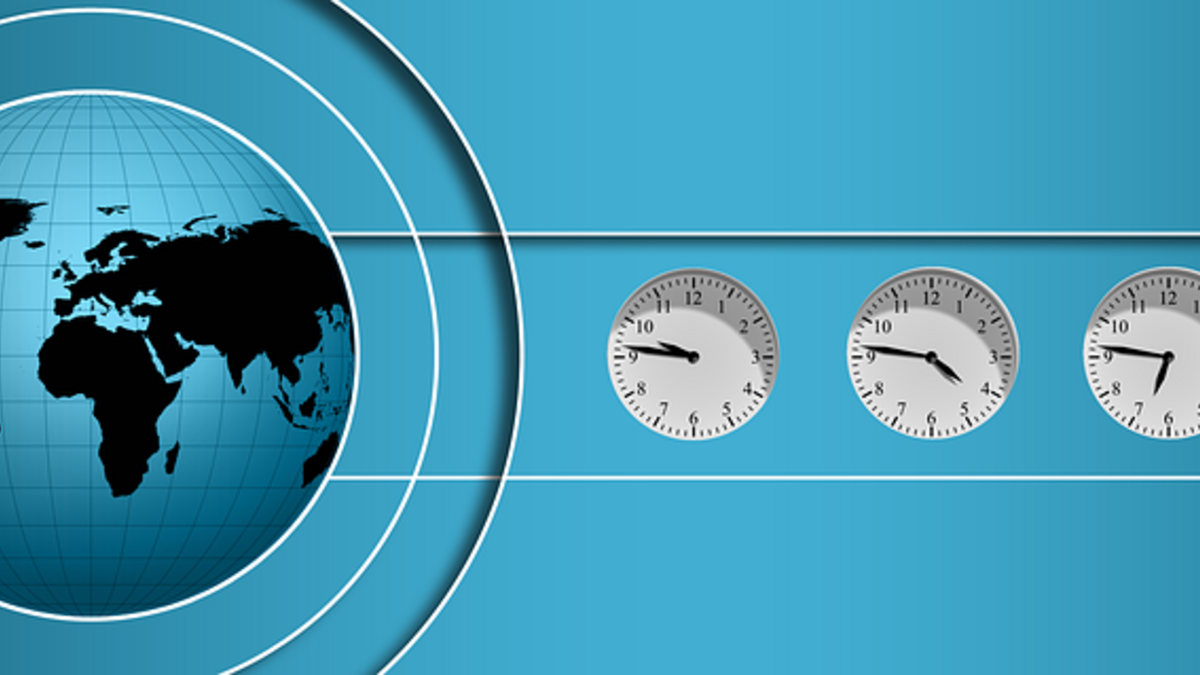Editor's note: This story is being highlighted in ASU Now's year in review. Read more top stories from 2018 here.
Daylight saving time is right around the corner, and it's time to set those alarm clocks and watches forward again … Er, wait. Arizona doesn’t do have to do that. And neither does Hawaii.
The Copper State’s independence from the annual time change started 50 years ago. Multiple theories abound as to why: More daylight meant more heat and less sleep. It also meant soaring energy bills for businesses and schools, or anyone who owned an air-conditioning unit.
To get to the truth, ASU Now asked Calvin Schermerhorn, a history professor in the School of Historical, Philosophical and Religious Studies, why Arizona is one of two states that do not participate in this century-old practice.
Calvin Schermerhorn
Question: When was daylight saving time established and why?
Answer: The Standard Time Act of 1918 included a provision for daylight saving time. Daylight saving time was meant to save fuel during World War I by extending the day by one hour. The law was repealed in 1919, but Arizona participated in daylight saving for a few more years. At the time, some far western counties observed Pacific Time while most of the state remained on Mountain Time. A World War II measure briefly put the state again on daylight saving, again to save fuel. But Congress standardized time zones with the Uniform Time Act of 1966. It let states opt out, but Arizona adopted daylight saving time from April to October 1967. And then it refused to participate since.
Q: Why did Arizona stop participating?
A: Arizona participated in daylight saving time in 1967, but energy consumption soared. In most of the country, an extra hour of daylight supposedly saved fuel used to heat and light buildings. But in most of the state, the scheme worked in reverse: air conditioners had to run longer. Businesses and schools paid more, farmers did not benefit, and parents also resented an extra hour of scorching sunlight for kids since the saving lengthened the hot afternoon. There were some supporters in finance and interstate or international business who preferred tighter syncing with markets (who pointed out) the logistical problems of moving Arizona back and forth relative to daylight saving. Outdoor entertainment and recreation establishments like daylight saving since it extends the time one can play golf. Crime appears to go down too, with more daylight. But since Arizona stopped participating in 1967, the Copper State is officially on Mountain Standard Time year round.
Q: Given Arizona’s non-participation, has it served the state well given the shorter winter days and long summer nights?
A: Yes, non-participation makes sense for most of the population living in the Sonoran and other desert environments. Simply put, it’s more eco-friendly in terms of power usage to start the day earlier rather than later. Businesses, schools and vehicles require more energy consumption to air-condition spaces. As the experience of a half-century ago illustrates, most of the population prefers it that way too. And Arizona is not running afoul of any laws since federal legislation allows states to opt out.
Q: Somehow it doesn’t seem neighborly that Arizona is the only state that doesn’t honor daylight saving time. Does the state receive complaints as a result or have you ever heard of any?
A: Both Hawaii and Arizona opt out. Other U.S. territories do as well, like Puerto Rico, Guam and the Virgin Islands. Arizona’s non-participation is a badge of honor for a place reputed to be fiercely independent. But it still causes problems for anyone doing business or scheduling across time zones. FaceTiming the grandparents on the East Coast? We’ll have to make sure it’s a two-hour and not a three-hour difference. And you’ll have to adjust your car’s clock when it wants to switch to Pacific Daylight Time going over the Colorado River.
Q: Does everyone in Arizona opt out?
A: No, the Navajo Nation in Arizona participates in daylight saving, which applies to most of the northeast corner of the state, keeping in sync with the neighboring parts of the Navajo Nation in Utah and New Mexico. But since U.S. authorities in Arizona follow the state’s non-participation, government offices in the Navajo Nation operate on Mountain Standard Time while Navajos observe Mountain Daylight Time. Making things more confusing still, the Hopi Nation, surrounded by the Navajo Nation, does not observe daylight savings. So, driving from Flagstaff to Kykotsmovi Village one would have to change the clock twice, once driving into the Navajo Nation and then into the Hopi Nation. And don’t ask a police officer for the time unless you know where you are.
More Science and technology

New ASU study explores how electric fields could repel mosquitos
Forget insecticides. Next time you’re trying to repel mosquitoes, why not just rig your home with electric fields to zap those pesky buggers away?That might sound outlandish, but new ASU-led research…

ASU psychology professor recognized for research on emotion regulation
How well someone manages their emotions predicts success in school or work, social relationships, mental and physical health, well-being and more.On Thursday, Oct. 24, the American Psychological…

Harnessing nature’s code for data storage
As the digital world expands, scientists are exploring DNA’s remarkable capacity to store data, converting this ancient molecule into a next-gen information archive.Since the 1980s, DNA has been…

